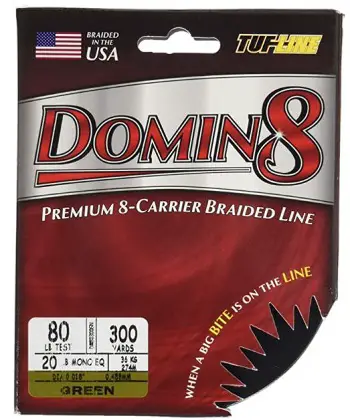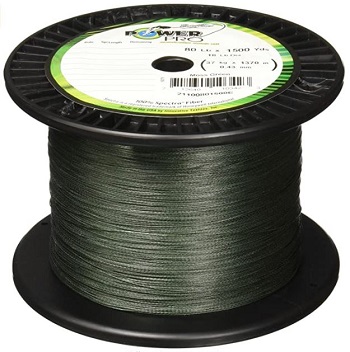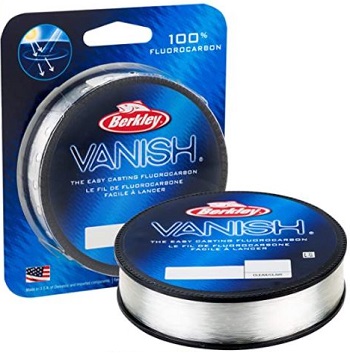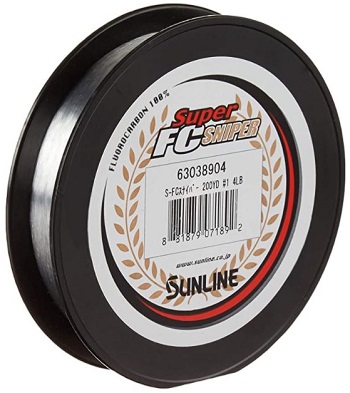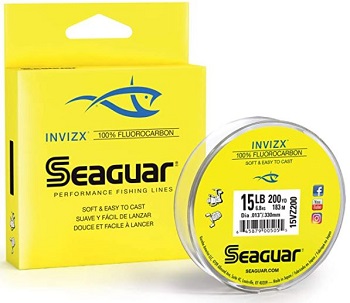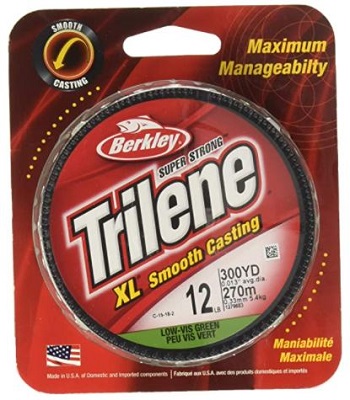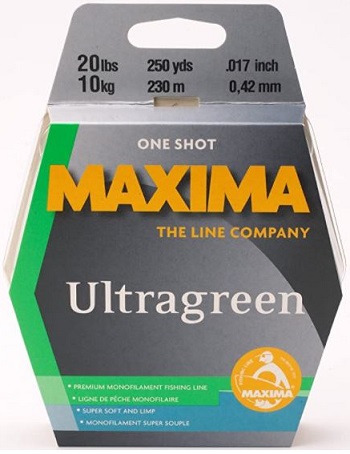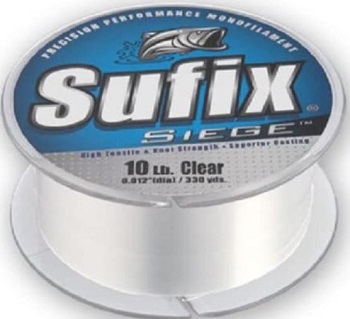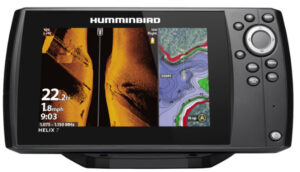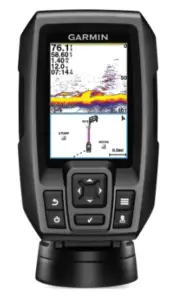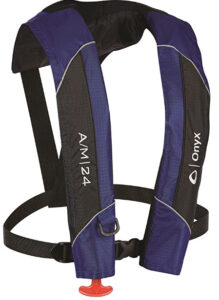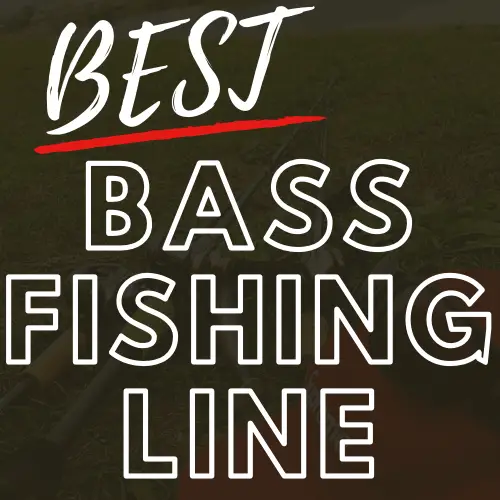
What is the best bass fishing line? | What is a good fishing line for bass?
The best type of bass fishing line is based on a variety of factors such as technique, experience, and personal preference. There are many kinds of fishing lines that are used in many different ways and each type of line has its pros and cons. To make it easy on you we’re giving you the complete breakdown of each style of line. We also included the Ultimate Fishing Line Application Chart for you to utilize for a quick reference.
This is not an article to tell which line brand is the best, as that is truly a preference, but I will break down the different types of lines and most used applications for each one.
Most anglers will tell you the most important piece of equipment in fishing is not the rod, the reel, or even the bait; it has to be the line. I mean, really when it is all on the line, you should be fishing with the best line you can.
“When It’s All On The Line”
Unless you have years and years of experience, choosing the best bass fishing line for the situation you’re presented in can take a very long time to learn. Even more so because every year technology advances and newer and better fishing lines come to market.
I’m sure you can remember when you went to the store to buy fishing line the only choice you had was monofilament. Now if you go to an outdoor store they have an entire wall filled with different types of fishing line.
If you’re new to the sport this can be incredibly daunting, especially if you want to know what line is best for bass fishing, especially with the historic expansion of hunting and fishing opportunities*.
We’ve Been In Your Shoes… We’re Anglers Too!
We read through hundreds of customer reviews, watched tons of video reviews, and analyzed what the professionals and experts had to say from popular sources like BassMaster Magazine, FLW and other industry leaders.
We scrutinized the data from the product catalog pages of nearly a dozen manufacturers, and we even tried to interview some of the company representatives to talk shop and get their take.
We even collected indisputable data, collected real-world examples to be able to give you the most complete unbiased product review we could create
Together we’re giving you the edge by teaching you how to choose the best bass fishing line for your specific situation. We tried to cover as many situations as we can, but if we left any out feel free to comment below and we will add it if we can.
What Are The Most Common Fishing Lines for Fishing
Well, there are three main types of line used by most anglers; Braided, Fluorocarbon, and Monofilament.
Each one has qualities that make them better than the others depending on the technique you are fishing with, here are the breakdowns.
WARNING: There’s a lot of information about this subject you’ll probably want to come back to. No one expects you to remember all these tips. We know your time is precious, so we really tried to over-deliver in value for you. Additionally, we frequently update reports like this, so you’ll want to stay up to date with any changes or additional tips we include for you.
We found that the easiest way to save and bookmark this report so you can come back to it later is to share it on your favorite social media platform, especially if you use your phone to get important tips like the ones in this report here…
Click on your favorite social media buttons to remember this page now!
What is the Best Line for Bass Fishing?
It really depends on what application you’re going to use it for. Bass fishing is a very situational specific sport.
Different lines have different features and characteristics that you can use to your advantage.
In A Hurry?
If you don’t have much time to read the detailed reviews, simply use the links below to quickly find the best fishing line for each style discussed below conveniently on Amazon. You can be assured we only choose the best products…
Best Fluorocarbon line – Sunline Super FC Sniper
Best Braided line – TUF Line Domin8
Best Monofilament line – Maxima Ultragreen
Fishing Line Test Chart
Below you’re going to find your own fishing line test chart. It instantly gives you the best line to use in reference to what type of lure you’re using!
We know you’re busy. Download your own FREE copy of the Bass Fishing Blueprint – Fishing Line Test Chart – Click Here!
| Topwater | |
|---|---|
| Popper & Chuggers Walking baits (sammies, gunfish) Prop Baits Wake Baits (<1oz) |
Monofilament line: 12-lb test **Optional) 20-lb braided mainline + 10-12-lb monofilament leader line. |
| Buzzbaits Wake baits (>1oz) Hollow-Body Frog |
Braided line: 50-65-lb test **(Option 1) 50-65-lb braided mainline + 15-20-lb monofilament leader line. |
| Moving Baits | |
| Shallow diving crankbaits Squarebill crankbaits |
Monofilament line: 15-17-lb test **(optional) Fluorocarbon line: 15-17-lb test |
| Medium diving crankbaits | Fluorocarbon line: 10-15-lb test |
| Deep diving crankbaits | Fluorocarbon line: 10-12-lb test |
| Jerkbaits | Fluorocarbon line: 10-12-lb test |
| Swimbaits (<1oz) | Fluorocarbon line: 15-17-lb test |
| Swimbaits (>1oz) | Braided line: 50-65-lb test **(Optional) 50-65-lb braided mainline + 20-25-lb monofilament or fluorocarbon leader. |
| Lipless crankbaits | Fluorocarbon line: 10-12-lb test |
| Spoons (<1 oz) | Fluorocarbon line: 8-12-lb test |
| Spoons (>1 oz) | Fluorocarbon line: 15-17-lb test |
| Underspins | Fluorocarbon line: 10-12-lb test |
| Spinnerbait | Fluorocarbon line: 10-15-lb test |
| Umbrella Rig/A-Rig | Braided line: 50-65-lb test **(Option 1) 50-65-lb braided mainline + 20-25-lb monofilament or fluorocarbon leader. **(Option 2) 25-lb monofilament line only |
| Soft Plastic Baits | |
| Texas Rigged Soft plastics: - Senko/stick baits - Worms - Brush hogs/ Creature baits - Lizards - Tubes - Leeches - Soft plastic jerkbaits/flukes |
Conditions: Water Clarity: Clear-slightly stained – No to little surrounding structure: Fluorocarbon line: 8-12-lb test Water Clarity: Moderate stained +/- moderate surrounding structure: Fluorocarbon line: 14-17-lb test |
| Drop Shot | Conditions: Water Clarity: Clear-slightly stained – little surrounding structure: Fluorocarbon line: 5-8-lb test Water Clarity: Clear-slightly stained – little surrounding structure: Fluorocarbon line: 8-12-lb test **(Optional) 15-20-lb braided main line + 5-12-lb test fluorocarbon line leader |
| Jigs | |
| Casting jigs Swim jigs Football jigs |
Conditions: Water Clarity: Clear-slightly stained – No to little surrounding structure: Fluorocarbon line: 12-15-lb test Water Clarity: Clear-slightly stained – moderate amount of surrounding structure: Fluorocarbon line: 15-17-lb test Water Clarity: Highly stained – Muddy Clear-slightly stained – Little – moderate amount of surrounding structure: *Fluorocarbon line: 17-20-lb test *Line that is in low visibility conditions can have a large test/diameter. |
| Flipping Jigs | Conditions: Water Clarity: Clear-slightly stained – No to little surrounding structure: Fluorocarbon line: 12-15-lb test Water Clarity: Clear-slightly stained – moderate amount of surrounding structure: Fluorocarbon line: 15-17-lb test Water Clarity: Highly stained – Muddy Clear-slightly stained – Little – moderate amount of surrounding structure: *Fluorocarbon line: 17-20-lb test *Line that is in low visibility conditions can have a large test/diameter. |
| Punching vegetation mats | Braided line: 50-65-lb test |
| Finesse jigs Hair jigs Ned Rig (jig) |
Conditions: Water Clarity: Clear-slightly stained – little surrounding structure: *Fluorocarbon line: 8-12lb test *Fluorocarbon line can be also be used as a leader. |
| Bladed Jigs | Fluorocarbon line: 10-15-lb test |
Don’t have time to really analyze all the best fishing lines? No Problem. Click Here to download your own FREE copy of the Fishing Blueprint Fishing Line Test Chart – NOW!
What is the best fishing line for topwater?
Best Lines For Fishing Topwater
For most top-water applications, braid or mono is preferred or a combination of the two. The simple reason why is because they float.
From this, you can decide which is better depending on the force needed to produce a hook-set on which to use.
For example, I was told by dozens of pro anglers they throw their frogs on braid because of the large diameter hooks and force needed to set the hook through the lips of a bass.
Top-water baits like a popper or walking baits are best thrown on mono only or braid to mono leader, because the stretch allows the hook to dig in rather than pull it out of the fish’s mouth.
For buzz baits, most anglers use 25-pound monofilament especially if you’re fishing above floating vegetation.
The monofilament line will lift the buzz bait to the top of the water column and over the grass.
Quotes From The Pros...
“Above all, use heavy line. I throw buzzbaits on 25-pound monofilament that has some stretch and allows the fish to eat the bait. Fluorocarbon line wants to sink and has less stretch”.
– Kevin VanDam, Bassmaster.com
Walking baits – “I throw monofilament a lot, that’s what I like and that’s what I’ve done well with.”
– Jacob Wheeler, Rapala.com
Poppers – “I will go as light as 12-pound, but generally it is going to be 15-pound. The only time I will go up to 17- or 20-pound is if I am making short casts under overhanging cover with a big popper”
– Scott Canterbury, Westernbass.com
What does fishing line test mean?
You may ask yourself how thick is fishing line? Line test (or known as ‘pound test’) refers to the strength of the fishing line.
The fishing line is then tested to see how much weight it can hold before it snaps. If the line breaks at 20-pounds of pressure its classified as 20-pound test line.
What is fishing line made out of?
Most modernized fishing lines are made from man-made substances such as nylon, polyvinylidene fluoride (PVDF, also called fluorocarbon), polyethylene, Dacron, Dyneema, or monofilament.
By far the most common type of fishing line is going to be monofilament.
Braided Fishing Line
Fishing Braided line and knot tips
How is braided fishing line made?
Braided fishing line is exactly that, strands of fiber braided together to form a super-strong line. This adds some positive attributes like high knot strength, amazing power in relation to diameter of the line, and little to almost no stretch.
Original braid was made from natural fibers like cotton and linen, but throughout time, it has evolved into more manufactured fibers like Spectra, Dacron, or Micro-dyneema.
These fibers are woven into a braid that makes a truly stronger-than-life line at a relatively small diameter.
It’s diameter is one-third to one-fourth the diameter of the same tensile strength as its counterparts of fluorocarbon or monofilament fishing line.
Any time you are expecting to catch from giant fish you should use braided line either as a leader or straight to your lure.
Braided Line Benefits
Braided fishing line has little-to-no stretch. In turn, it gives the angler awesome sensitivity to bites or bottom structure.
Another added bonus to braid is the cast distance is increased. Braided line has no “memory”, meaning if it’s unspooled it won’t form little circles like fluorocarbon or monofilament line will. This in turn decreases drag and allows the angler to cast a ‘country mile’.
Braided fishing line floats, which is great because it aids you to help keep your lure on the surface.
Cons of Using Braided Line
The con about using braided lines is that it can be cut very easily.
Braided line is also completely visible to the fish, especially when it’s in clear water… which is why most anglers will use braided fishing line as a leader in clear water.
Anglers have commonly complained that braided line will give you one of the worst backlashes
There have been several professional anglers and many more recreational fishermen who said that braided line makes a loud noise when being reeled in.
However if all the guides are clean of any debris and the guides also have no nics, chips or any other damage they shouldn’t make much noise.
If you’re still worried about noise Power Pro also made an coated braided line that casts incredibly smooth and make no rubbing noise when being reeled in.
Braided Fishing Line Uses
When and how to use braided fishing line
Braided fishing line can be used in bass fishing in multiple ways.
On spinning tackle it is most often used as a leader line…
Whereas, on baitcasting tackle, it’s used many more ways. A lighter test can be used as a leader line for topwater fishing, versus a heavier pound test can be paired with large swimbaits. Braided lines can also be commonly used for flipping, pitching and punching vegetation mats.
Best Knots For Braided Line
Best knots for braided line
Palomar Knot – Hands down the best knot to tie using a braided line is the Palomar knot. This knot is strong and super easy to tie. The Palomar knot has also been known to cast incredibly easily as well.
Double Uni knot – One of the most popular knots for fishing in saltwater, the Double Uni knot is used when tying braid to either monofilament or fluorocarbon line. It’s very easy to learn and incredibly strong.
Single Uni Loop Knot – Another popular saltwater knot that has gained enormous popularity. Tying a loop knot will give your lure a little extra freedom and movement. This is a great knot if you’re fishing a swim jig or large swimbait.
Best Braided Line for The Money
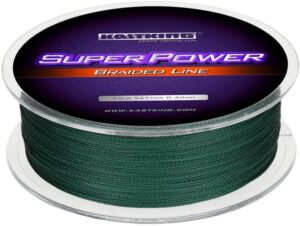
– Best Budget –
KastKing SuperPower
This line is very strong. It’s also relatively smooth. Tying knots or tying line-to-leader knots do not seem to be a problem. This entry braided line would be acceptable for trolling.
- Great strength test results
- Excellent abrasion resistance
- Zero stretch
- 327 yard spool
- Reports of the color dye causes gumming
- Some say line is too stiff and will reduce casting distance
– Winner! –
TUF Line Domin8
This braided line is what other manufactures strive to be. This line casts smooth, it’s insanely strong, and the color doesn’t bleed. The actual strength is higher than the rating! Many anglers will even drop down in size because it’s so strong. Best of all this line is made in the U.S.A.
- Best in class for sensitivity and strength
- Superior abrasion resistance
- Virtually no knot slippage
- Proprietary round construction
- Made in the U.S.A.
- 300 yard spool
- Pricey
– Runner Up –
Power Pro Spectra
If you’re looking for a straight up no memory line that is ridiculously strong this is a great choice. This line has been a trusted for over 20 years! It’s great if you fish in either freshwater or saltwater
- Great knot strength
- Low diameter
- Perfect entry line
- 150 yard spool
- Gouging eyelets are common
- Complaints of color of the line bleeding onto baits
Fluorocarbon fishing line
When to use fluorocarbon fishing line
Fluorocarbon fishing line is made from a small variety of things like, fluorine, chlorine, and carbon. These chemicals are melted and mixed similarly to monofilament and extruded through small holes into a single strand as well.
The molecules of fluorocarbon are denser or packed together tighter which can make it heavier in relation to the diameter. This is why fluorocarbon-fishing line sinks instead of floats like other lines.
This line is very sensitive, more so than mono, but less than braid. It is far more abrasion resistant than the other two options as well, which makes it great for fishing around or in thick cover.
It is virtually invisible because it has almost the same UV index as water, which helps around clear water or skittish fish.
Unlike braid and mono, this line is waterproof, which allows it to keep the same strength and sensitivity in the water as it does dry.
As far as stretch goes, it is in between the braid and mono.
Overall they each bring a variety of advantages and disadvantages, this is why you will see many pro-anglers have reels spooled with each depending on their technique.
Manufacturers of fluorocarbon fishing line
Manufacturers of fluorocarbon fishing lines also use high-tech materials that are also patented. As a result, you’ll see fewer manufacturers of this type of line!
“10-15-pound fluoro makes [your bait] run a foot or so deeper, while thicker 20-pound mono cuts a foot or two off its running depth.”
– Randall Tharp, Bassmaster.com
Fluorocarbon Fishing Line Uses
If you’re needing an ultra-thin and zero stretch line for that’s crucial to your presentation then you need fluorocarbon fishing line.
Here are some common uses for fluorocarbon line:
- Jerkbaits
- Jigs
- Crankbaits
- Swimbaits
- Spinnerbaits
- Soft plastic baits
Best Knots For Fluorocarbon
Palomar Knot
Improved Clinch Knot
“I’m running 12-pound fluorocarbon on a lot of these crankbaits, but when I use the giant Strike King 10XD, I pair it with 14-pound because it’s so big and heavy you’ll risk breaking the line as you snap to cast it with anything less.”
– Gerald Swindle, wired2fish.com
Best Fluorocarbon Line for The Money
– Best Budget –
Berkley Vanish Fluorocarbon
Berkley Vanish is an entry level line that is a little more flexible than other lines consequently easier to tie knot and have them cinch up right. It’s easy cast makes good leader material for fresh or light salt water.
- High tensile strength
- Low diameter
- Great entry line
- 250 yard spool
- Backlashes more common
- Complaints of fraying
– Winner! –
Sunline Super FC Sniper
Smaller in diameter, this line is easier to handle while casting and fishing with less stretch than many other brands. It has low memory and great strength. Sunline is a very good quality fluorocarbon line and worth the expense if you want to use fluorocarbon fishing line. No wonder professional anglers use this line.
- Top-tier knot strength
- Superior abrasion resistance
- Invisible to fish
- Butter smooth to cast
- 200 yard spool
- Pricey
– Runner Up –
Seaguar InvizX
Fish never break it off. It can be dragged over branches or rocks back to the boat. Doesn’t coil too much and easy to cast.
- Outstanding sensitivity and strength
- Excellent abrasion resistance
- Can withstand the toughest of hooksets
- 200 yard spool
- Line twist is a common complaint
Monofilament line
Monofilament fishing line tips
Monofilament or “mono” for short is a line made from a single fiber or plastic, hence the term “mono” or one. It is made by melting and mixing different plastics or fibers and then forcing them through extremely small holes into a long strand.
Benefits of Using Monofilament Fishing Line
Used largely by the saltwater community, monofilament fishing line is known for its abrasion resistance when fishing around coral reefs or around mussel beds.
Mono has a stronger abrasion resistance than braided line and slightly better than fluorocarbon line.
You’ll have no problem finding monofilament fishing line. Nearly all tackle stores and big-box retailers offer monofilament fishing line to purchase.
This is also the least expensive class of fishing line.
“There are times when we don’t want our plugs to reach their maximum depth. Sometimes, like when you’re fishing over brush or weeds, we want them to stay high. 17-pound monofilament will help with that.”
– Mike Iaconelli, Mikeiaconelli.com
Disadvantages of Using Monofilament Fishing Line
Monofilament line is not as strong as braid in relation to the diameter of the line. Mono also floats and has a much more stretch than braid, and fluorocarbon lines.
It absorbs water, which will make knots become loose, so always check your knots periodically.
In larger diameters, the monofilament line is visible to fish. However this line can come in a variety of colors as well, but unlike braid, it can be clear, which makes it much less visible.
What makes a good monofilament line?
Buoyancy. Monofilament line floats… which can be a good or possibly a bad thing.
If you’re looking to use a topwater popper, using a monofilament leader is a great idea. It will help to keep your bait above the water.
If you’re working a shallow running squarebill crankbait around brush, trees, structure, stick-ups, ect.. You’re not really too worried about it diving too deep. The monofilament line will allow that lure to dive the correct shallow depth and still give you the peace of mind it will have better abrasion resistance than braided line.
However, if you’re trying to get a deep-diving crankbait down to its maximum diving depth it will make it relatively difficult.
Since the line floats, it will pull the lure up. This will make it so the crankbait will not swim as deep.
Stretch. Monofilament has a lot of stretch to it, kinda like a rubber band. The thinner diameter has more stretch. And it’s really not such a bad thing… it really depends on how you’re using it.
If you’re using monofilament alone and making long casts, the line will be stretchy and you’ll have difficulty setting the hook. So monofilament is really not the best line for that application.
But, if you’re using monofilament as a leader it will act as a shock absorber.
Stiffness. Like braided line monofilament line floats, however unlike braided line monofilament is a little stiffer… and that can be a good thing.
When monofilament is used as a leader when fishing topwater lures such as walking baits and buzzbaits the monofilament won’t get tangled up in the lure or treble hooks like braided line will often do.
Best Monofilament line for baitcasters
Many anglers have the problem of the monofilament line they’re using does not sit right on the spool, and I had trouble casting and create a backlash.
Some tips to remember when choosing a monofilament line is the larger the diameter (anything >15-pound test) the more problem with coiling you’ll encounter.
When you’re spooling on the line in the first place. Get a proper line winding tool. It helps the line lay on the spool correctly every time.
Best Monofilament Line for The Money
– Best Budget –
Berkley Trilene XL
The go-to monofilament for 35 years or more. It knots superbly, and stays limp, making it much easier to cast with using conventional reels than with stiffer lines. Thousand of anglers say that it won’t let you down.
- Excellent all-purpose mono
- Fewer kinks
- Best value
- 330 yard spool
- Backlashes more common
- Complaints of fraying
– Winner! –
Maxima Ultragreen
Vertically invisible in the water. It’s been the toughest monofilament line we ever used in this class. Holds all knots insanely well. Holds up to fraying. Great for trolling or casting. Performs great in freshwater or saltwater.
- Best knot strength
- Superior abrasion resistance
- Least visible to fish
- 220 yard spool
- Pricey
– Runner Up –
Sufix Seiege
Exceptionally tough line I haven’t had that much of a problem with it. Abrasion resistance is excellent. It also has low memory and just enough stretch.
- Great casting distance
- 15x greater abrasion resistance
- Smooth handling
- 330 yard spool
- Line twist is a common complaint
Line-Leader Combinations
If you’re new to bass fishing or fishing in general, you’ll notice seasoned anglers reference “main line to leader combos”. It feels bad if you think tying two different fishing lines together sounds a little crazy… we can relate.
The purpose of tying two different lines together is you’re using the best qualities of both lines and joining them by tying them together with a special knot to make an even better line…
This will increase your chances to catch the fish of a lifetime!
The “main line” is the line that is tied on to your reel. This is going to be the bulk of the line that you have on it.
The “leader line” is a separate length of line that is tied at the end of the leader line. This is the “business end” where you tie your lure or hook.
You can attach your lines together by two main ways, tying them directly together with a line-to-line knot… or you can use to tie both lines onto, such as a swivel.
Make sense so far? Great!
How do you rig a leader line?
In this section you will be given the two EASIEST and quickest ways to tie two lines together…
There are several ways to rig a line-to-leader. We know that learning to tie two different lines together can be frustrating. But practice makes perfect, so don’t get too upset if you don’t get it immediately.
Yes, there are other knots to tie two lines together, but try these two methods at first. Then settle on a knot that is easiest for you.
Once you become comfortable with a specific knot you can then branch out and try other knots.
Fishing Knots: Alberto Knot (easiest to learn)
How to tie the Alberto knot
We found this is one of the quickest and easiest knots to tie. It works well with both monofilament and fluorocarbon lines.
Can be used with a braid mainline to a monofilament or fluorocarbon leader.
Fishing Knots: FG Knot (strongest knot to learn)
How to Tie the FG Knot the Best Leader Knot in Bass Fishing
Easily thought to be one of the strongest line to leader knots, the FG knot is small, compact and easy to cast. It can be a little tricky to learn but it’s not impossible.
The FG knot can be used with a braid mainline to a monofilament or fluorocarbon leader.
Why tie monofilament to braided line?
Using a braided line to monofilament line combination is great if you’re fishing with topwater baits and really shallow running crankbaits, like squarebill crankbaits or wake baits.
This is why this combination works…
You need a line that floats… braided line floats and monofilament floats… CHECK!
You want a line combo that is responsive which allows you to set the hook without thinking twice…
Braided line has the zero stretch which grants you the ability to set the hook with ease… CHECK!
Remember the two big problems using braided line?…
It has no stretch and it’s super limp!
That can be a HUGE pain when you’re using a lure with small, thin hooks like a topwater popping bait.
When you set the hook using only braided line, it will often bend or pull the hooks completely out of that bass’s mouth! Not what you want…
Also the braided line can get wrapped around the hooks of your topwater baits…
Baits like your poppers, buzzbaits can be rendered useless if the line gets wrapped in the bait!
The solution…
By adding a two-foot monofilament leader, it acts like a shock absorber… meaning, once the bass eats your lure and you set the hook, the little section stretches just enough for that lure to embed the hooks in the fish’s mouth!
When fishing topwater lures, you want to avoid pairing your braided line with a line that sinks, like fluorocarbon. It will pull down your lure.
Finally, monofilment is slightly stiff and prevents any line wrapping around the hooks of your lure.
But there is a place for a braid-to-fluorocarbon line-leader combination and we’re going to discuss that next…
Why use a fluorocarbon leader with braid?
Bass Fishing - The Advantage to using Braided Line to a Fluorocarbon Leader
You’ll have the best results using a fluorocarbon leader for two different situations, when finesse fishing (such as; drop shot, shaky head, Neko or wacky rig fishing) and flipping/pitching in clear water.
The insane clarity and super abrasion resistance of fluorocarbon line makes it a great choice of leader material, especially since the fish can see the braided line.
Because the fluorocarbon line does not stretch it’s perfect for it’s instantaneous hooksets.
Filling your entire spool with fluorocarbon line can be expensive, however if you use braided line as the primary line you’ll save some money.
Our research has shown that most professional anglers will not use a fluorocarbon leader length less than 36-inches or three feet in length.
[TOURNAMENT SECRET] I saw this at a tournament and guy winner crushed it by drop shotting… I saw him putting his rods away and noticed all his finesse rods had bright yellow braid. I pulled him aside and asked why?. He said to fill your reel’s spool with a bright colored braided line (like Hi-Vis yellow) and then tie on a six foot fluorocarbon leader. The bright-colored braided line will act like a strike indicator and since the leader length is so long the bass will only focus on your lure! COOL RIGHT!
But this can backfire on you…
If your leader is too short the fish will see the braided line and become spooked.
Here’s a point to remember, if your fluorocarbon leader gets scuffed or nicked, the line will be now visible.
So if you’re fishing around structure or after you catch a fish check for scratches and change out the line frequently.
[MY BIG PROBLEM] Tangled Fishing Line.
There is nothing worse trying to cast out and the second it hits the water the line on the spool of your spinning rod becomes unwound leading to a ton of twists and tangles. It can really suck to have your line twisted and tangled, then you have to spend time fixing it.
I can remember when I wanted to do some fishing after work, I just bought a new rod and reel and put some brand new 8-pound fluorocarbon line on it…
I remembered the night before I was in a rush to get everything ready and I didn’t put the line on correctly. So the next day I casted out a jig next to a tree stump and I didn’t close the bail once the lure hit that water…
Needless to say the line peeled off my reel like a slinky… but it gets worse…
I suddenly saw my line zoom to deeper water! Tring desperately I attempted to reel in all the tangled line, but it wrapped around my drag setting and became locked up! YIKES!
I was desperate…
I didn’t want this fish to get away… I was handed my birds-nest of a reel over to my fishing buddy to hold and I attempted to pull the fish in by hand.
Once the fish felt the line being pulled in it made another run! I had already gotten it out from the tree stump and now it was headed to the right side of the boat…
That was when it wrapped itself around the boat motor. I could feel it trying to shake the hook… then the fighting stopped.
I hoped it the fish decided to give up, but I knew it was not the case… the line was too limp.
I grabbed the line and sure enough the only thing that came back was a broken line and no fish.
How to Avoid Fishing Line Tangles When Casting
When it comes to fishing, it’s so important that you know how to fix tangled fishing line BEFORE it starts.
Loosely or poorly wrapped line on the spool is the more common cause for horrible line tangles. It creates loose coils on the spool…
And like my horrible experience, when I casted my lure the line quickly came off my spool leaving me with a massive problem and a lost fish!
So here is how to avoid fishing line tangles:
1. Put your line on your reel the correct way.
How To Put Line On A Spinning Reel
How To Spool A Baitcaster | Reduce Line Twists, Backlashes
2. Watch for kinks when reeling on your line.
When your package spool is lying on the ground and your line is tied to the reel’s spool.
Using your pointer finger and your thumb apply a small amount of pressure to make sure the line is being placed on the spool nice and snug.
3. Don’t over fill the spool.
If too much line is placed on the reel’s spool it’s sure to come off and cause you a massive headache.
So when you’re reeling on the line stop about 1/16th of an inch from the lip of the spool.
4. Warm the new line in warm water.
Once your spool is nearly full, lock down the line on the spool or simply wrap a couple of rubber bands around the spool.
Untwist the front spool cap and carefully take of the cap. Then cautiously remove the spool and from the reel and place into a bowl of warm water for 10 minutes.
This allows the new line to “relearn” the smaller spool.
Frequently Asked Questions:
How long should a leader line be fishing?
There is no definitive rule on what the maximum length the leader line needs to be.
However asking several professional anglers and fishing guides, they say if you are needing a leader line for the purpose of disguising your main line, then you need a leader line of at least 24-inches.
Most will agree that a leader needs to be 2-5 in length. In special situations, some will even suggest 6-8 feet of fluorocarbon leader material.
Should a leader be heavier than the Main Line?
There are two answers to that question… because it depends on what you’re fishing for…
If you’re targeting a larger species like pike or musky, you’ll want a stronger leader material to prevent those toothy predators from cutting your line.
If you’re targeting bass only, you really don’t have to worry about any gnarly teeth cutting your line. So in that case you may want to go with a thinner leader line… think drop shot fishing.
Watch the videos that we included in the article above to learn the best main line to leader knots.
How to choose the best fly line for bass fishing
Weight: 7/8/9 Taper: WF
The best fly lines for bass fishing are going to be “weight-forward floating” lines. Since you’ll most likely be using larger flys you’ll need a line that will perform.
When you throw that large fly into that small area of structure you’ll need a fly line with front short taper and a head that is compact and most importantly accurate for scooting those large flies into a small tight space.
Using a 7-weight line with a leader/tippet of 8-12-lbs.
Best Fly Line For Bass Fishing - Chart
| Species | Largemouth bass |
|---|---|
| Line | Weight: 7/8/9 |
| Taper | WF: Weight forward |
| Leader/Tippet | 8 lb – 15 lb |
| Best flies | Poppers (large or small) Deceivers Minnows |
| Species | Smallmouth bass |
|---|---|
| Line | Weight: 6/7/8 |
| Taper | WFDT: Double taper |
| Leader/Tippet | 8 lb – 12 lb |
| Best flies | Poppers (small) Minnows Terrestrials Streamers |
| Species | Striped Bass |
|---|---|
| Line | Weight: 8/9/10 |
| Taper | WFDTST: Shooting taper |
| Leader/Tippet | 10 lb – 20 lb |
| Best flies | Poppers (large or small) Deceivers Minnows |
Getting Started With Bass Fishing? Read These Articles First...
- How To Catch Bass – 57 Fool-Proof Methods To Start Bass Fishing [Made Easy!]
- 5 Best Bass Baits Every Angler Must Own (Are You Missing Out?)
- Best Bass Fishing Lures 2024: Comprehensive Buyers Guide
- Bass Fishing Rod Secrets: Helps You Chose The Right Type Of Rod Faster!
- 21 Tips To Choose The Best Bass Fishing Line
- WARNING: Don't Even Think About Trying To Buy Your Fishing Reel Until You Read This...
- Water Clarity Guide for Bass Fishing [Blueprint Revealed]
- Top Secret! Catch Bass From the Bank Every Time
- 25 Night Bass Fishing Tips and Tricks
What are stainless steel line leaders used for?
Stainless steel leaders are used in fishing where the target fish has really sharp teeth that can cut through your standard line.
In a recent report, medium-sized tackle shops and big box retailers have announced that stainless steel leaders are the most popular style of bite leader line.
Stainless leaders can be used both in freshwater and saltwater applications.
In freshwater fishing for pike or musky, you’ll most likely reach for a stainless steel leader. If fishing in the ocean for sharks, barracuda or bluefish, you’ll definitely want to use a steel leader.
Another reason why stainless steel leader is so popular with anglers is they appear dull and resist any reflections and will appear dull.
What is lead core line used for?
Trolling. These types of lines have a “core” of lead that gives the line plenty of added weight to keep your lures deep in the strike zone.
Many think that trolling with lead core line is the easiest way to troll because you don’t have to be all the expensive equipment like downriggers.
Finally, one of the coolest features of lead core line is it is colored differently every 10 yards and has about 10 different colors for each section so you don’t get mixed up.
What color line for bass fishing?
It is still unknown if bass can see different color lines. It is known that bass do pick up shades of red, green, and grey. Some lines like green braided line will blend in to the environment if it’s used in an area that holds vegetation.
However it will stick out like a sore thumb if it’s used in clear water conditions. Fluorocarbon line will actually absorb sunlight and therefore render itself invisible.
Unfortunately if the line gets any nicks or scrapes the fish will easily see the imperfection and could be spooked. Monofilament lines can appear shiny underwater and reflect the sunlight. It’s generally not recommended when you need a stealthy delivery.
Read more: 21 Tips To Choose The Best Bass Fishing Line
Does unused fishing line go bad?
Yes it does. Braided line can last years because of its thread-like construction. However, fluorocarbon and monofilament should be changed every year because they will dry out, become brittle, lose knot strength, and will be prone to breaking. If you’re going to store your line it’s best if you store it indoors in a dark environment.
Read more: Bass Fishing Line Tips To Catch You More Fish – FAST!
Accessories You’ll Need
Fishing Rod
 Rod –The popularity of fishing is growing and people are becoming much more conscious of different rods that can help them.
Rod –The popularity of fishing is growing and people are becoming much more conscious of different rods that can help them.
Fishermen want the best technique-specific rod for the money.
Luckily, the report I wrote provides you with detailed information in order for you to make buy the rod for the money, and more importantly which rods to avoid at all costs.
>> What Rods To Use For Bass Fishing? 10 Awesome General Purpose Rods Reviewed
Fishing Reel
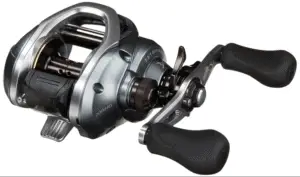
Reel – Having the correct reel to match with your rod is just as important. A good reel should be light and have a buttery smooth drag. There are several great reels on the market, but I recommend the a quality Shimano baitcasting reel. It’s a great reel packed with great features. So much so that it could easily be priced in the mid $200 range.
>>How To Choose A Great Bass Fishing Reel For The Money [and which to avoid at all costs]
Fishing Line
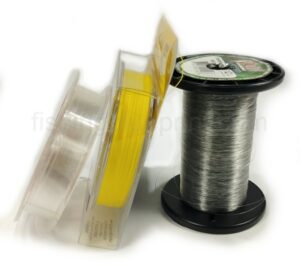
Fishing Line – Having a good line is just as important as having a good rod. I recommend fishing with a good fluorocarbon line. Furthermore, it’s super sensitive because it has little to no stretch, and underwater it’s invisible to the bass! If pride or money is on the line I would use Sunline Sniper FC.
>>21 Tips To Choose The Best Fishing Line
Fishing Lures & Baits

Fishing Lures – It’s pretty hard and darn near impossible trying to catch a fish without using some sort of lure or bait. More importantly these baits you should never forget at home or it could lead to a horrible day on the water
>>5 Bass Fishing Lures You Never Want to Leave At Home
Fish Finder
Finding lunker bass has never been easier when using a fish finding sonar unit. Packed with additional features to make your day on the water even easier. Maps that can plan your day or help you find your way back even in the darkest of nights. Bright bold numbers and letters to make reading the maps easy even in the brightest of days, and colors that pop and make it quick and easy to identify fish.
If you have a boat, kayak, canoe, or float tube, you need a fish finder.
Here’s our choice for the best fish finder between $299-$800:
Humminbird HELIX 7 CHIRP MEGA SI
It has all the features for any serious fisherman whether you’re an avid weekend warrior, or a tournament angler. This has all the bells and whistles you’re looking for.
>> Click HERE to Read The Reviews About Humminbird HELIX 7 CHIRP MEGA SI now
Here’s our choice for the best economic fish finder:
Garmin Stryker
While others look for bites, your fishfinder and GPS plotter help you reach your daily limit. You can mark preferred docks, ramps, and hotspots to easily return to them later and even share waypoints.
Click HERE to Read The Reviews About Garmin Stryker now!
Life Vest
According to Statista, “In the United States, 658 people died as a result of boating accidents and 2,641 people were injured in 2021.”
And it gets even worse… The National Safe Boating Council reported, “Where cause of death was known, 81% of fatal boating accident victims drowned.”
And if that’s not enough the incidence of deaths has climbed dramatically in recent years.
So if you’re on the water you NEED to wear your life vest. Protect you, your friends, and your families lives by wearing a life vest every time you’re on the water.
I recommend the ONYX PFD. It’s comfortable for all day use and there is lots of room for the air to move around so you won’t get sweaty.
>>Click HERE to read all the reviews actual customers!
Sunglasses
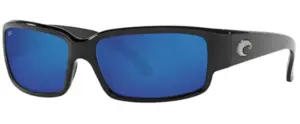 Sunglasses – Do you find yourself fishing in variable light and water conditions? Fishing in open water? Fishing in the bright hot sun? Then, only to leave the lake with eye strain and a splitting headache?
Sunglasses – Do you find yourself fishing in variable light and water conditions? Fishing in open water? Fishing in the bright hot sun? Then, only to leave the lake with eye strain and a splitting headache?
If so, I strongly recommend investing in a pair of Costa Sun Glasses. Thousands of anglers, charter guides, and tournament professionals put their trust into Costa, and so should you. Here’s why…
Costa’s co-injected bio-based nylon frame material is robust and durable, as well as extremely comfortable to wear for all-day use. TR-90 nylon is an excellent material for sports and performance frames since it is heat and cold-resistant.
Costa builds their glasses with class-leading technology. Their 580G glass lens sets them apart from the competition. These lenses are ideal for long days on the lake or sea since you won’t have to worry about scratches on the lens when you wipe the saltwater off. Needless to say they’re Costa’s most durable lenses.
Anyone who spends time outside, especially on the lake, needs polarized lenses. However, not all polarized sunglasses are the same. Costa is 99.9% polarized, giving it the most effective possible in blocking reflecting glare, and minimizing eye strain and headaches.
>>Click HERE to Read The Reviews On These Costa Sunglasses Right Now!
Drift Sock
Simply speaking, a drift sock (also known as a drift anchor) is like a parachute for the water. It gives you the ability to silently troll without spooking the fish!
Anyone who fishes out of a boat, canoe, kayak, stand up paddle board, or any other type of floating vessel should have a drift sock ready to use.
In addition to helping you catch more fish, recreational boaters also like to have 1-2 drift socks handy, just in case their motor goes out on them the drift sock will help slow their drift. This could be instrumental to allow rescuers to find that boat quickly and easily.
I strongly recommend the Drift Master Drift Sock by Mythik Outdoors.
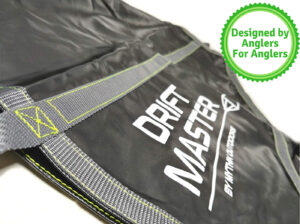 The construction is solid. Holding this in your hands gives you the peace of mind this feels durable and dependable.
The construction is solid. Holding this in your hands gives you the peace of mind this feels durable and dependable.
I love that it’s made from the gorilla-strong “RipStop” high density material, and I like that it’s even paired with the high-density nylon strapping.
It’s 30% stronger than other competitors who use a cheaper version of the RipStop material, so you never have to worry about his ripping.
Looking closely I can see they even triple stitched the high-tension points which is a good feature.
But best part… the Drift Master comes in a complete kit!
So get yours today and don’t leave yourself adrift.
The last thing to note is the Mythik Outdoors Drift Master drift sock kits sell out fast, so make sure you get yours before they’re gone!
>>Click HERE to Read The Reviews On This Drift Sock Today!
Landing Net
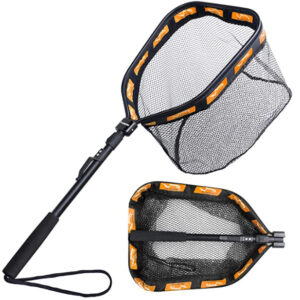 Landing Net – As you are reeling in that monster fish, you don’t want to injure yourself or knock the fish off the hook by trying to grab it.
Landing Net – As you are reeling in that monster fish, you don’t want to injure yourself or knock the fish off the hook by trying to grab it.
The PLUSINNO floating landing net is designed with foam padding on the hoop and provides buoyancy for fishermen. Now, If the net is dropped or blown overboard, the floating design makes it simple to retrieve – so you won’t have to be concerned about losing it! The rubberized net cannot be snagged. It keeps the fish safe for catch-and-release, and the non-absorbent covering avoids waterlogging and odor absorption in the net. It’s collapsing design allows for easy storage.
That’s why I recommend a dependable telescopic landing net.
>>Click HERE to Read The Reviews On This Floating Landing Net Today!
Fishing Weight Scale & Culler
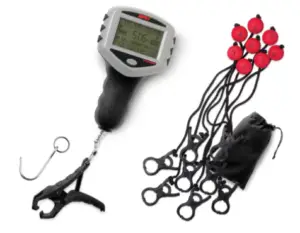 Fishing Weight Scale – Whether you’re going to keep your catch or just take a photo of it and brag to your friends it’s important to have an accurate scale. The Rapala Tournament Model Touch Screen Scale makes weighing and logging your catch easier and more convenient. The large digital scale has a lot of functions and is easy to use. simply keep track of your current catch and its place in your overall weight. To see the weight, just suspend the catch from the heavy-duty composite clamp or the accompanying stainless steel hook. Adding the important details to your catch couldn’t be easier – simply input your catch’s weight and tap on one of the eight storage places. The culling process makes it simple to identify fish that should be released for the greatest overall weight.
Fishing Weight Scale – Whether you’re going to keep your catch or just take a photo of it and brag to your friends it’s important to have an accurate scale. The Rapala Tournament Model Touch Screen Scale makes weighing and logging your catch easier and more convenient. The large digital scale has a lot of functions and is easy to use. simply keep track of your current catch and its place in your overall weight. To see the weight, just suspend the catch from the heavy-duty composite clamp or the accompanying stainless steel hook. Adding the important details to your catch couldn’t be easier – simply input your catch’s weight and tap on one of the eight storage places. The culling process makes it simple to identify fish that should be released for the greatest overall weight.
I recommend a Rapala Tournament Scale that has a large LED display like this one fishing scale here.
>>Click HERE to Read The Reviews on This Tournament-Grade Fishing Scale & Culling System now!
More articles just for you...
Funny Fishing Rules, Laws, and Regulations 2025
Crazy Fishing Laws That Will Blow Your Mind! #7 is INSANE! Strange Fishing Regulations and Laws As silly as hook and rod limits may seem,
EXPOSED! How To Use A Spinnerbait The Right Way for 2025
Are You Wondering How To Use A Spinnerbait? Or How To Work A Spinnerbait Over Grass, Logs, or Points? Well, All These Questions Are Answered
EXPOSED! Best Crankbait Colors for 2025 [Which to Buy & Avoid]
What color crankbait to use? Crankbait Color Chart I just love going into a Bass Pro Shops store and just staring at all the walls
Best Underwater Dock Lights For Fishing – 2025 Buyers Guide
Night Dock Light Fishing For Beginners Dear fellow angler, Does this sound like you? You’re someone who loves fishing but just wants to escape the
15 Best Deep Diving Crankbaits [2025 Buyers Guide – Which to Buy & Avoid]
A Complete Buyer’s Blueprint On The Best Deep Diving Crankbaits for Bass, Walleye, or Striped Bass On The Market Today Fishing deep diving crankbaits can
source [1]

